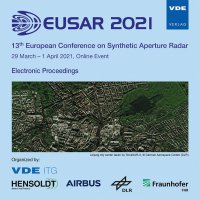GPU Accelerated Processor For Continuous L- And C- Band SAR Tomography
Konferenz: EUSAR 2021 - 13th European Conference on Synthetic Aperture Radar
29.03.2021 - 01.04.2021 in online
Tagungsband: EUSAR 2021
Seiten: 4Sprache: EnglischTyp: PDF
Autoren:
Giardino, Andrey; Pasquali, Paolo; Defilippi, Marco (Sarmap SA, Caslano, Switzerland)
Peternier, Achille (Sarmap SA, Caslano, Switzerland & University of Applied Sciences and Arts of Southern Switzerland, Lugano, Switzerland)
Buck, Christopher (European Space Agency - ESTEC, Noordwijk, The Netherlands)
Inhalt:
This paper presents the tomographic SAR processor developed for a project promoted by the European Space Agency. The goal was studying and implementing operational algorithms for future exploitation of data that would be provided by current mission proposals based on companion satellites and supporting tomography. The tomographic method infers the 3D radar reflectivity of a scattering volume penetrated by electromagnetic radiation at longer wavelengths and, as such, offers new opportunities for investigations of vegetation and ice. The processor developed for the project includes preliminary steps of images coregistration and interferograms flattening, followed by removal of atmospheric phase in order to prepare the data for actual tomographic inversion. Focusing along elevation starts by defining the non-ambiguous height interval and height resolution offered by the interferometric baseline sampling and span of the acquisitions. Then, radar reflectivity is estimated at each point of the tomographic cube by complex correlation between the observed interferometric signal and the phase temporal pattern predicted by acquisition geometry, thus relying on the beam-forming approach. To the aim of improving speed, the computationally intensive algorithms of the processing chain have been implemented leveraging the OpenCL platform technology, hence yielding benefits associated with parallel execution. Computing on graphics processing units enables cost/efficiency and increases the processing pipeline speed thanks to massively parallel architectures. The processor has been validated with airborne BIOSAR-2008 L-band SAR data on vegetated sites.


